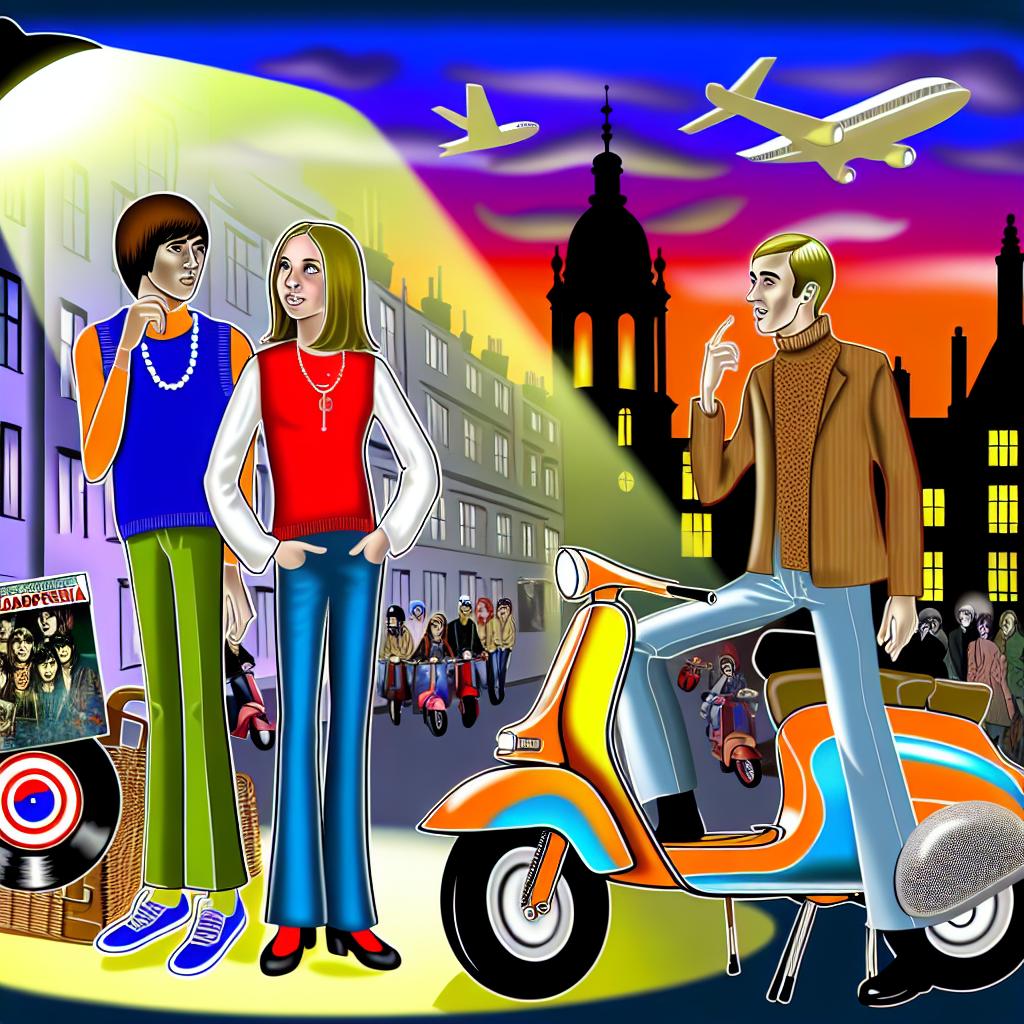The Making of Quadrophenia
Quadrophenia is a seminal album by the British rock band The Who, released in 1973. This rock opera was primarily composed by Pete Townshend, the group’s guitarist and principal songwriter. Quadrophenia’s production was ambitious, integrating studio techniques and emerging synthesizer technology to create a sophisticated sound that explored complex themes.
Concept and Production
The album tells the story of Jimmy, a young mod in 1960s London, struggling with identity and societal pressures. The term “Quadrophenia” is a play on schizophrenia, referencing Jimmy’s four distinct personalities corresponding to the members of The Who. Each band member represented different facets of Jimmy’s character, giving depth to the protagonist’s journey of self-discovery. This thematic complexity required an intricate production process.
The production phase was marked by a strong emphasis on multitrack recording, a technique that was gaining prominence during that era. This allowed The Who to craft a richly layered sound by superimposing different instrumental and vocal tracks. Such innovation gave the album a unique sonic signature that set it apart from the band’s earlier works. A standout aspect of this innovation was the integration of synthesizers, notably the ARP synthesizer.
Townshend’s skillful application of this technology helped to underline the album’s thematic elements, enhancing the narrative’s emotional depth. The synthesizers were primarily used to add harmonic layers and atmospheric textures, creating an immersive audio experience that supported the story being told.
Musical Elements and Innovations
Throughout the album, The Who combined rock with classical influences, integrating an orchestral approach that utilized traditional rock instruments alongside electronic innovations. Such fusion is evident in tracks like “Love Reign O’er Me” and “The Rock,” where orchestral instruments harmonize with electric guitars and synthesizers.
Roger Daltrey’s vocals were pivotal in conveying Jimmy’s internal conflict and emotional turmoil. His powerful and emotive singing captured the essence of a young man caught between conflicting identities and societal expectations. This vocal performance, combined with Townshend’s innovative use of synthesizers and sound effects, contributed to a rich narrative experience.
The use of environmental sounds, such as crashing waves and the clatter of trains, enhanced the storytelling aspect of the album. These sound effects were not mere embellishments; they played a crucial role in creating a vivid auditory landscape that transported listeners to the scenes unfolding within the songs.
Release and Reception
Upon its release in 1973, Quadrophenia was met with critical acclaim and commercial success, although it was initially overshadowed by its predecessor, “Tommy.” Critics praised its ambitious scope and thematic depth while acknowledging the meticulous craft behind its musical composition.
The album resonated particularly with British audiences due to its authentic depiction of the mod subculture, a prominent movement during the 1960s. While “Tommy” captured international attention with its rock opera structure, Quadrophenia connected more intimately with British youth through its relatable characters and authentic cultural references.
Impact on British Youth Culture
The influence of Quadrophenia on British youth culture in the 1970s was profound. The album, along with its later film adaptation in 1979, effectively encapsulated the essence of the mod lifestyle, which was characterized by distinctive fashion, music, and social attitudes. Its themes of rebellion, identity, and social alienation struck a chord with young people seeking to carve out their place in a rapidly changing society.
The Mod Revival
The rich portrayal of the mod scene in Quadrophenia spurred a revival of mod culture in Britain. Young people eagerly embraced its fashion and music, finding resonance with Jimmy’s struggle against the pressures imposed by traditional norms.
Around the time of Quadrophenia’s release, Britain witnessed a resurgence in the popularity of scooters, smart tailored suits, and soul-infused rock music. These elements, emblematic of the mod subculture, were given new life not only through the album but through the lifestyle it represented.
Film Adaptation
In 1979, the themes of Quadrophenia reached an even broader audience with the release of its film adaptation. Directed by Franc Roddam, the film adeptly captured the mod lifestyle by pairing The Who’s compelling music with striking visual storytelling.
The film brought to life Jimmy’s journey with vivid authenticity, featuring dynamic scenes that mirrored the album’s narrative. It provided a cultural touchstone for fans and newcomers alike, leading to a renewed interest in both the album and the mod subculture. Over the years, the film has attained a cult status, further cementing Quadrophenia’s significance in popular culture.
Enduring Legacy
Decades after its release, Quadrophenia remains a cornerstone of The Who’s legacy and British rock history. Its exploration of themes such as self-discovery and societal pressure continues to resonate with audiences, illustrating the timeless nature of its narrative and musical innovation.
The album’s ability to capture and convey the experiences of youth in conflict with societal expectations makes it relevant to contemporary listeners. Its complexity and boldness have influenced countless artists and continue to inspire discussions around the power of rock music to evoke personal and societal reflection.
For more insights on British rock history and the impact of iconic albums, you can explore further resources through dedicated music archives and articles.
